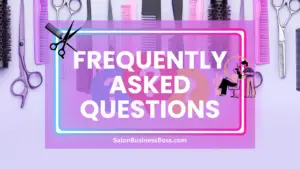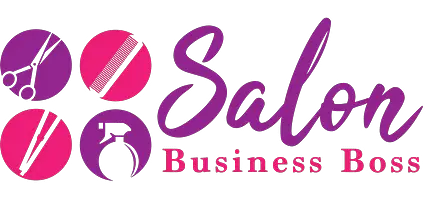Opening a hair salon is a dream for many entrepreneurs looking to delve into the beauty and wellness industry. However, turning this dream into a reality involves a significant financial commitment.
A hair salon costs $100,000 to $500,000, depending on factors like location, equipment, and staffing. From lease expenses to salon furnishings, permits, and marketing, aspiring salon owners must carefully plan their budget for a successful venture in the competitive beauty industry. Passion, dedication, and smart financial decisions can turn the dream of owning a thriving hair salon into a reality.
1. Location and Lease Costs:

The location of a hair salon is a pivotal factor in determining its success. Selecting the right spot can lead to increased foot traffic and a steady influx of customers. However, prime locations in high-traffic areas often come with a higher price tag. For instance, leasing a space in a bustling urban center may require monthly payments ranging from $3,000 to $8,000 or even more, depending on the location’s popularity and demand.
On the other hand, if you opt for a suburban setting, you may find more affordable leasing options. Suburban areas typically offer lease costs ranging from $1,500 to $5,000 per month. This can be an attractive alternative for salon owners looking to reduce initial overhead expenses.
The size of the salon also directly impacts the lease costs. Larger spaces require more significant investments. Salon owners need to strike a balance between the size of the salon and the potential clientele they can accommodate to ensure profitability.
Careful consideration and market research are essential when choosing the salon’s location. Factors like nearby competition, accessibility, and demographics should be taken into account to maximize the salon’s visibility and appeal to the target audience.
Read more about: Hair Extensions: Costs, Types, and Factors That Influence Pricing
2. Salon Equipment and Furnishing:
Equipping a hair salon with the necessary tools and furniture is a substantial upfront expense. The salon’s overall ambiance and functionality greatly depend on the quality and variety of equipment and furnishings you choose.
Essential salon equipment includes salon chairs, hairdryers, styling stations, washbasins, and reception furniture. The cost of purchasing these items can range from $20,000 to $50,000 or even higher, depending on the brand and quality of the equipment.
Investing in ergonomic and modern salon equipment is a wise decision, as it not only enhances the customer experience but also contributes to the salon’s overall image. Comfortable salon chairs and high-quality hairdryers, for example, can make clients feel pampered and satisfied, encouraging them to return and recommend the salon to others.
Selecting durable and aesthetically pleasing furnishings can create a welcoming and professional environment, leaving a lasting impression on customers.
To manage equipment costs, salon owners can explore financing options or consider purchasing pre-owned equipment in good condition. It is crucial, however, not to compromise on quality, as investing in durable and reliable equipment will prove cost-effective in the long run, reducing maintenance and replacement expenses.
3. Renovations and Interior Design:
Converting an empty space into a captivating hair salon requires meticulous planning and attention to interior design. Renovations typically involve tasks like electrical wiring, plumbing installations, flooring, and painting. The extent of the renovation and the quality of materials used significantly impact the overall costs.
For a basic salon setup, renovation expenses may range from $10,000 to $20,000. This includes essential upgrades to ensure a functional and safe environment for clients and staff. However, for more upscale salons with premium finishes and high-end amenities, renovation costs can soar to $50,000 or more.
Aesthetic elements play a crucial role in creating a welcoming ambiance. Incorporating wall art, decorative mirrors, and tasteful decor adds a finishing touch to the salon’s interior. These details contribute to the overall atmosphere, influencing how clients perceive the salon and enhancing their overall experience.
To manage renovation costs, it’s essential to plan the layout efficiently, optimize space utilization, and prioritize the most crucial aspects of the design. Additionally, seeking quotes from multiple contractors can help identify competitive pricing and ensure the best value for money.
4. Licensing and Permits:
Before launching a hair salon, obtaining the necessary licenses and permits is a legal obligation. These regulatory requirements vary depending on the location and local ordinances. Salon owners must secure salon permits, business licenses, health department approvals, and potentially other permits based on specific services offered.
The cost of obtaining licenses and permits can range from $1,000 to $5,000. This expense covers the application fees and any associated processing charges. It is crucial to research the specific requirements for your area and ensure compliance with all regulations.
Complying with licensing and permit regulations not only avoids potential legal issues but also ensures that the salon operates in adherence to health and safety standards. Prioritizing the acquisition of permits during the planning stage is essential to avoid delays in the salon’s opening and potential penalties for operating without proper authorization.
5. Inventory and Product Costs:
A well-stocked inventory is the lifeblood of any successful hair salon. Offering a wide range of hair care products, styling tools, and hair dyes is essential to cater to diverse client needs and preferences. Collaborating with reputable suppliers and stocking high-quality products is key to ensuring customer satisfaction and building a loyal clientele.
The initial investment in salon inventory typically falls within the range of $5,000 to $15,000. This includes purchasing hair care products such as shampoos, conditioners, serums, and styling products, as well as essential styling tools like scissors, brushes, and combs. Additionally, hair dyes in various shades and brands should be available to meet clients’ color requests.
To maintain a consistent supply of inventory, salon owners should allocate a portion of their budget for ongoing restocking expenses. Depending on the salon’s size and the volume of clients, monthly restocking costs may vary from $500 to $1,500 or more.
Strategic inventory management is crucial to avoid overstocking or understocking. Keeping track of product expiration dates and analyzing sales trends can help optimize inventory levels and minimize wastage.
6. Staffing and Training:

The success of a hair salon heavily relies on its staff. Hiring and training a skilled team of hairstylists, colorists, assistants, and receptionists is vital to deliver top-notch services and create a positive salon experience.
Salon owners should budget for salaries and benefits when hiring employees. The costs of staffing can vary based on the level of experience, location, and market demand. It is essential to offer competitive compensation to attract and retain talented individuals.
Investing in staff training and professional development is key to maintaining a high standard of service. This includes workshops, seminars, and certifications to keep the team updated with the latest trends and techniques in the hair industry.
Budgeting for staffing and training expenses should be an ongoing consideration. As the salon grows, additional staff might be required, and continuous training ensures that the team remains up-to-date with evolving trends, ensuring the salon’s offerings stay relevant and competitive in the market. A motivated and skilled team is an invaluable asset for any successful hair salon, contributing to customer satisfaction and word-of-mouth referrals.
Read more about: Main Reasons Why Hair Salons Fail (and how to prevent it)
7. Marketing and Advertising:
Effective marketing and advertising are crucial for attracting customers and establishing the salon’s presence in the competitive beauty industry. Allocating a budget for marketing efforts is essential, especially during the salon’s initial stages when building a client base is critical. Depending on the scale and scope of marketing activities, salon owners should set aside a budget ranging from $5,000 to $20,000 or more per year.
Social media campaigns are a powerful tool for reaching a broad audience and engaging potential clients. Creating appealing content, running targeted ads, and collaborating with influencers can boost brand visibility and attract new customers. Local advertising through flyers, posters, and local directories can also attract nearby residents to visit the salon.
Incorporating promotional offers and loyalty programs can incentivize clients to return, fostering customer loyalty. Engaging in community events and partnerships can further enhance brand reputation and strengthen ties with the local community.
A successful marketing strategy aims to create brand awareness, showcase the salon’s expertise, and maintain consistent communication with clients through newsletters or email campaigns. Regularly evaluating the effectiveness of marketing initiatives helps salon owners refine their strategies for optimal results.
8. Operational Costs:
Running a hair salon involves various ongoing operational expenses that ensure smooth day-to-day operations. These costs include utilities such as electricity, water, and heating, as well as internet and phone services. Additionally, salon owners must allocate a portion of their budget for insurance coverage, which includes liability insurance and coverage for equipment and property.
Maintaining a clean and hygienic environment is crucial for a hair salon. Therefore, budgeting for professional cleaning services is essential. Salon software for appointment scheduling, client management, and inventory tracking can streamline operations and enhance efficiency, warranting a place in the operational budget.
Operational costs typically range from $2,000 to $5,000 per month, depending on the salon’s size, location, and specific needs. It is essential to closely monitor expenses and seek cost-saving opportunities without compromising the quality of service.
Proactive measures, such as energy-efficient appliances and water-saving fixtures, can contribute to reducing utility expenses in the long run. Proper budgeting and efficient management of operational costs contribute to the salon’s financial stability and its ability to deliver exceptional services to clients.
Conclusion
The cost of opening a hair salon can range from $100,000 to $500,000, and several factors influence these expenses. Understanding the detailed breakdown of costs is crucial for aspiring salon owners to plan their budget and make informed decisions. By carefully managing expenses, investing in quality equipment, and providing exceptional service, a well-organized hair salon has the potential to thrive in the competitive beauty industry. Proper planning, coupled with passion and dedication, can lead to the successful realization of your dream hair salon.
Frequently Asked Questions

1. Is owning a hair salon a profitable venture?
With proper planning, dedication, and effective marketing, a well-managed hair salon has the potential to be a profitable business.
2. Are there financing options available to fund the salon startup?
Yes, various financing options, such as business loans, grants, or partnerships, can help salon owners secure the necessary capital for their startup.
3. How long does it take for a hair salon to become profitable?
The time to profitability can vary based on location, marketing efforts, and the salon’s reputation, but it generally takes a few months to a year or more.
To learn more on how to start you own salon checkout my startup documents here.
Please note that the contents of this blog are for informational and entertainment purposes only and should not be construed as legal advice. Any action taken based on the information provided in this blog is solely at your own risk. Additionally, all images used in this blog are generated under the CC0 license of Creative Commons, which means they are free to use for any purpose without attribution.

About the author. Entrepreneur and Salon Business Fan.
Hi! I am Shawn and I am a happy individual who happens to be an entrepreneur. I have owned several types of businesses in my life from a coffee shop to an import and export business to an online review business plus a few more and now I create online salon business resources for those interested in starting new ventures. It’s demanding work but I love it. I do it for those passionate about their business and their goals. That’s why when I meet a salon business owner, I see myself. I know how hard the struggle is to retain clients, find good employees and keep the business growing all while trying to stay competitive.
That’s why I created Salon Business Boss: I want to help salon business owners like you build a thriving business that brings you endless joy and supports your ideal lifestyle.


